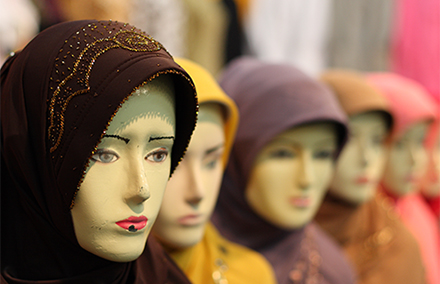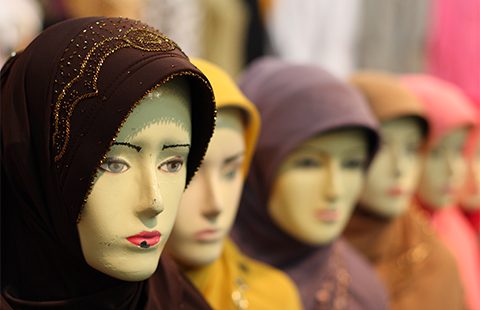
Photo: yeowatzup on flickr https://www.flickr.com/photos/yeowatzup/
It’s time to scrap ‘faux’ race categories to create a truly ‘Singaporean’ Singapore.
Before sovereignty, Singapore was a nation of immigrants, meaning that there was no ‘Singaporean nationalism’.
Instead there was an excess of rival ethnic (Chinese, Malay, Indian) and national (Malayan) sentiments.
Void of a mythical, legendary past and lacking the elements of a romantic struggle against oppression, Singapore did not possess the resources for the psychological creation of a national imagined community in which the people are connected to their land and each other through shared heritage.
To counter this, the Chinese, Malay, Indian and Others (CMIO) race categorisation in Singapore was designed, cultivating a system of cultural representation and giving impetus to the myth of Singaporeaness.
This origin story is based on a shared identity whereby members of the country’s various ethnic communities are progressively integrated into the wider population and become Singaporeans not only by law but also in their hearts and minds.
It is the government’s pluralist approach to managing cultural differences and ensuring inter-racial harmony and authentic ‘Asianess’ (whatever that may mean).
But like most categories, CMIO is starting to come under scrutiny, particularly when challenged by the complexities of the 21st century and an increasingly global world.
Speaking at a conference last week, Professor Chan Heng Chee, a former Ambassador to the United States, argued against scrapping the categorisation. She claimed that that jettisoning the category would be a cause for contention among the minority races even today.
“The majority community doesn’t feel uncomfortable. It’s the minority community where you have to keep emphasising its equal language, religion, culture and race,” she told the audience.
Professor Chan argued that CMIO, an umbrella identity created through housing, education and national service policies, assures minority races that their place in society is not under threat.
However, to truly share a common identity, Singaporeans must enough to think about ourselves in terms of nationhood rather than ethnicity.
One of the problems of CMIO is that every Singaporean is racially classified at birth. A child is assigned his father’s ‘race’ and other ambiguities are not taken into account. Additionally, the state recognises every citizen as a ‘hyphenated Singaporean’. For example, every Singaporean citizen is identified as Singapore-Chinese, Singapore-Malay.
The problem with this classification is that it encourages Singaporeans to only associate with their own culture and ethnicity. The paradox of this logic is that there is no culturally defined notion of Singaporeanness.
We should also consider making adjustments to our policy of bilingualism in education. Rationalised as a means for students to preserve their cultural connection the policy has been criticised fortifying ethnic autocracy. Once presented as a celebration of genuine cultural heritage, this policy is an unauthentic construct of Singapore’s cultural outlook.
As Chua Beng Huat states in the article Multiculturalism in Singapore: an instrument of social control, the notion of a ‘mother tongue’ automatically assumes that both parents are from the same racial group. With more inter-racial marriages among Singaporeans, children adopt the father’s race by law and may take the mother’s language as their second language in school. This choice may be motivated by economic factors.
But most disquieting is the fact that elite Chinese students have enjoyed an added advantage in the education system through the Special Assistance Plan (SAP).
Launched in 1979, SAP schools are extremely prestigious secondary schools that place a strong emphasis on Chinese culture. In 2008, the Ministry of Education introduced enhancements and opportunities for SAP schools to deepen their learning of Chinese language and culture.Similar Malay or Tamil elite schools were not created.
This perpetuates an intellectually superior ‘Chinese Singapore’, and such inequalities are undoubtedly inconsistent with the spirit of what Professor Chan terms as ‘CMIO Singaporeans’.
It is arguable that our brand of racial categorisation can be considered both as ‘faux’ and ‘manufactured’ – both the government and the people are sycophantic about Singapore as a multicultural/multiethnic society.
While liberal democratic traditions such as Canada and Australia allow issues such as race, ethnicity and identity to be open to consistent debates and deliberation, Singapore’s stance on these issues tend to languish in a pristine ideological space.
The late Mr S Rajaratnam, who penned Singapore’s national pledge, was a strong proponent of creating a ‘race of Singaporeans’. A society that is able to transcend the estrangement of primordial sentiments.
From a pragmatic standpoint, it would be arduous and even seemingly impossible. But, at least we should try.
Because in years time to come, we would have created something close to a truly Singaporean Singapore.
Patrick Sagaram lives and works in Singapore as a teacher.
 Facebook
Facebook  Twitter
Twitter  Soundcloud
Soundcloud  Youtube
Youtube  Rss
Rss 